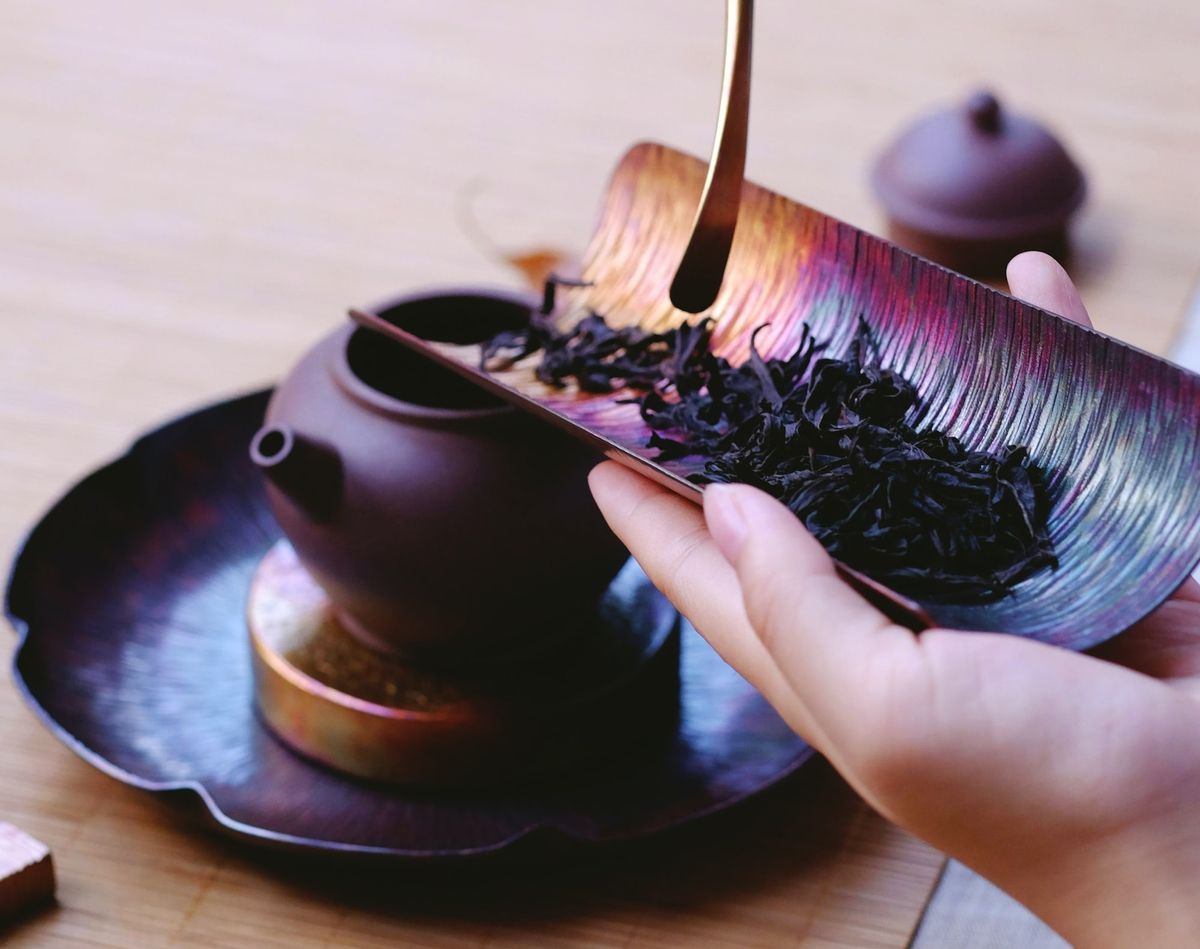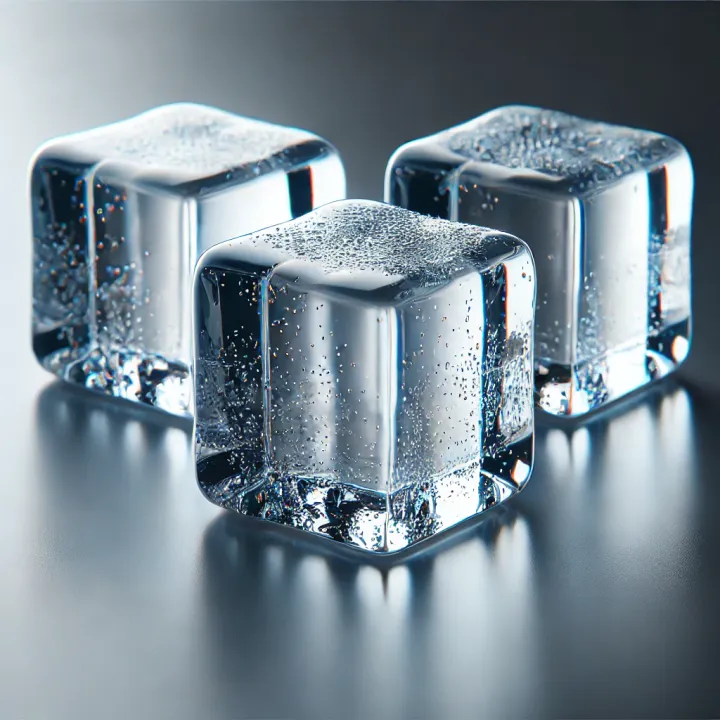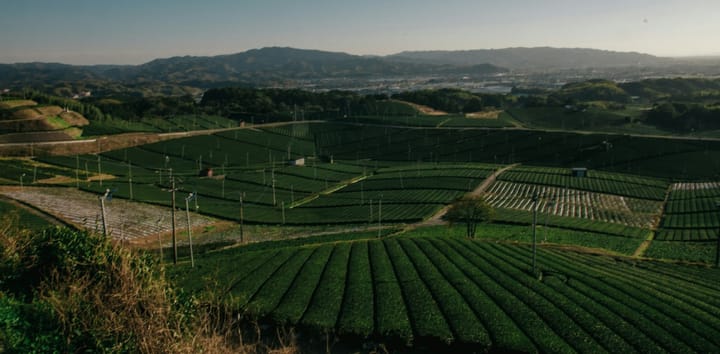What Is The Most Expensive Tea In The World?
Explore Luxury Teas and Discover The World's Most Expensive Tea

Tea, a cherished drink worldwide, holds deep cultural significance across continents. In China, the allure lies in black and oolong teas.
The origins of tea trace back to approximately 2737 BC, when, as legend has it, Emperor Shen Nung of China serendipitously discovered the beverage. As the tale goes, some leaves from the Camellia sinensis plant drifted into his boiling water, leading to the creation of the inaugural cup of tea.
While in Japan, premium green teas like matcha and gyokuro are revered. Meanwhile, the British are smitten with black tea concoctions, notably Earl Grey, and Indians passionately brew their chai. Meanwhile, in South America, the bold flavors of yerba mate reign supreme.
To many around the world, tea isn't merely a drink. It's a bridge to ancient traditions such as tea ceremony and a treasure trove of novel flavors. To the true connoisseur, tea presents a unique experience, a dance of taste and scent.
Without further ado, let’s explore our compilation of the world's most premium teas to augment your collection:
1. Da-Hong Pao Tea, China
Price: $1.2 million per kilogram
Da Hong Pao, often referred to as Big Red Robe, stands out as a premium oolong tea celebrated for its profound richness and notable cost. But what accounts for its hefty price tag?
Its roots trace back to the Ming Dynasty, where it was revered as an imperial tribute. Grown in the mineral-rich terrains of China's Wuyi Mountains, these tea plants enjoy an unparalleled microclimate.
Each harvest yields only a limited quantity of meticulously hand-picked leaves, preserving their quality and distinctive flavor. The tea's production is an intricate dance of precision, from partial fermentation to its careful processing by adept artisans.
Authentic Da Hong Pao, originating from the traditional Wuyi plants and crafted using age-old methods, sets a benchmark in quality, pushing away many market imitations. Its exceptional flavor, marked by deep earthy notes punctuated with hints of dark chocolate and a smoky undertone, further justifies its price.
In essence, Da Hong Pao's premium status is a blend of its historical reverence, rare harvesting techniques, and unwavering authenticity—a true gem for tea enthusiasts.
2. Panda Dung Tea, China
Price: $70,000 per kilogram
An Yanshi, a Chinese entrepreneur, has introduced an innovative organic tea range cultivated in the Ya’an mountains of Sichuan province, with a distinctive twist – the use of panda feces as a fertilizer.
Pandas, predominantly feeding on wild bamboo, assimilate merely 30% of the nutrients from their consumption. This implies that the remaining 70% of the nutrition gets excreted, potentially producing a fertile ground rich in nutrients for tea plants. Since pioneering this unique tea in 2011, An has amassed 10 tons of panda waste to nourish his plantation. He assures consumers of a refined, nutty flavor profile in every sip.
Highlighting the science behind this, Yanshi explains that the inefficient digestive system of pandas leaves their feces laden with essential fibers and nutrients. Drawing a parallel, he mentions that just as green tea possesses potential cancer-preventing elements, bamboo, which constitutes a panda's primary diet, contains similar beneficial compounds. In China, the initial tea harvest of the year, typically in spring, is revered as the finest brew.
3. Pu-Erh Tea, China
Price: $10,000 per kilogram
When discussing premium-priced pu-erh tea, the reference is often to sheng pu-erh. Superior sheng pu-erh typically commands a higher price than shou pu-erh due to its aging potential. As sheng pu-erh ages, it not only enhances in flavor but also appreciates in value, akin to the maturing of red wine.
The escalating prices of pu-erh tea in recent times can be attributed to its soaring demand. Over the past two decades, a growing number of tea enthusiasts have embraced pu-erh, incorporating it into their daily rituals.
Lao Ban Zhang (老班章) holds the reputation as the epicenter of premium pu-erh tea. Often dubbed the 'Crown Jewel of Pu-erh Tea', teas originating from this region are renowned for their robust, bitter profile, complemented by a lingering sweetness.
While the pinnacle of pu-erh teas is sourced from ancient gushu tea trees, these constitute only a fraction of the annual harvest. The caliber of the raw material used in crafting pu-erh cakes plays a decisive role in its pricing: superior ingredients invariably lead to heftier price tags.
4. Vintage Narcissus Wuyi Oolong Tea, China
Price: $6,500 per kilogram
Drawing its name from the Greek myth of Narcissus or Shui Xian in Chinese, this unique oolong tea is a rare gem cultivated in two primary regions: the majestic Wuyi mountains in China's Fujian province and the renowned PingLin tea zone in Taiwan.
Distinguished by its multifaceted palate, this tea mesmerizes drinkers with its robust woody and chocolate undertones, gracefully intertwined with delicate floral and fruity nuances. Beyond its splendid taste, its aroma is equally captivating, commanding attention with its potent fragrance. Such luxury doesn't come cheap; a kilogram of this special tea can set you back by approximately $6,500.
Like a meticulously aged wine, this tea becomes richer and more profound with time. To preserve its quality and elevate its flavor profile, it undergoes a special firing process every two years. This ritualistic drying ensures the tea remains free from excess moisture, enhancing its storied taste over the years.
5. Tie Guan Yin Tea, China
Price: $3,000 per kilogram
Tieguanyin, an Oolong variant from Anxi in China's Fujian province, has been a beloved tea since the 19th century. Its name, translating to "Iron Goddess of Mercy," is an ode to the Buddhist bodhisattva Guanyin. Among China's most popular teas, it boasts a rich flavor infused with floral and fruity undertones, underpinned by numerous health benefits like boosting immunity and metabolism.
Its production involves several meticulous steps:
- Picking: Unlike other teas, Anxi Tie Guan Yin leaves mature longer and are harvested in the afternoon. This lets the buds unfurl slightly, intensifying the aroma.
- Withering: After a brief outdoor withering, leaves are transitioned indoors for about 7 hours. Periodically shaken four times during this period, this process lets them oxidize slightly, enhancing the flavor.
- Firing: This occurs in metal woks over wood fires, further defining the tea's character.
- Rolling: Spanning three 30-minute intervals, this phase helps essential oils rise to the leaf surface.
- Roasting: This step defines Tie Guan Yin's unique character. Each farmer's roast duration and technique, often passed down through generations, remain closely guarded secrets.
Quality Tieguanyin leaves are recognized by their red-edged appearance. Originating from Anxi, with a tea cultivation history exceeding a millennium, this tea remains an embodiment of tradition and craft.
6. Silver Tips Imperial Tea, Darjeeling India
Price: $1,850 per kilogram
Silver Tips Imperial tea is exclusively harvested on full moon nights, capturing the essence of its unique timing. On the full moon night just before this year's summer solstice, between midnight and 3 am, expert women harvested two leaves and a bud at Makaibari Estates in Darjeeling by the light of tallow torches.
This 2-hour-59-minute plucking window was determined using the biodynamic calendar and astronomical charts. Rajah Banerjee, Makaibari's Chairman, emphasized that the full moon reduces water content in organisms, ensuring that the harvested tea is rich in flavor and character.
Garnering media attention, it set a record as India's priciest tea. Its impressive qualities inspired a renowned Japanese cosmetics designer to develop an anti-aging serum using it.
This semi-fermented Oolong has mango and frangipani flower notes, and it's packed with potent antioxidants—attributed to cosmic energy—boosting skin health and luminosity.
7. Gyokuro Tea, Japan
Price: $650 per kilogram
Gyokuro, Japan's prestigious green tea, surprises many with its hefty price. Although a household name in Japan, few have savored its unique flavor.
This tea, whose name translates to “jade dew” in reference to its vibrant hue, hails predominantly from Uji, Okabe, and Yame regions.
Unlike typical green teas, Gyokuro is shade-grown, demanding meticulous cultivation. This results in a jade-green brew rich in umami, reminiscent of the ocean.
The prime factor for its high cost is its limited availability. Gyokuro is produced only once a year during the Shincha season, from April to early June, restricting its market supply.
The shading process, lasting 20-30 days, enhances its sweetness and umami by increasing amino acids and theanine, reducing astringency. This makes Gyokuro's profile distinct from Sencha and even Matcha, despite similarities in shading duration. While both teas have umami tones, Gyokuro offers a brothy, savory experience as opposed to Matcha's powdered consistency.
Brewing Gyokuro requires precision. Oversteeping or overheating results in an undesired bitterness. While its cultivation is labor-intensive, the outcome is a top-tier Japanese tea. Given the limited annual quantity and the dedication of its farmers, Gyokuro's price is justified by its unparalleled quality.


